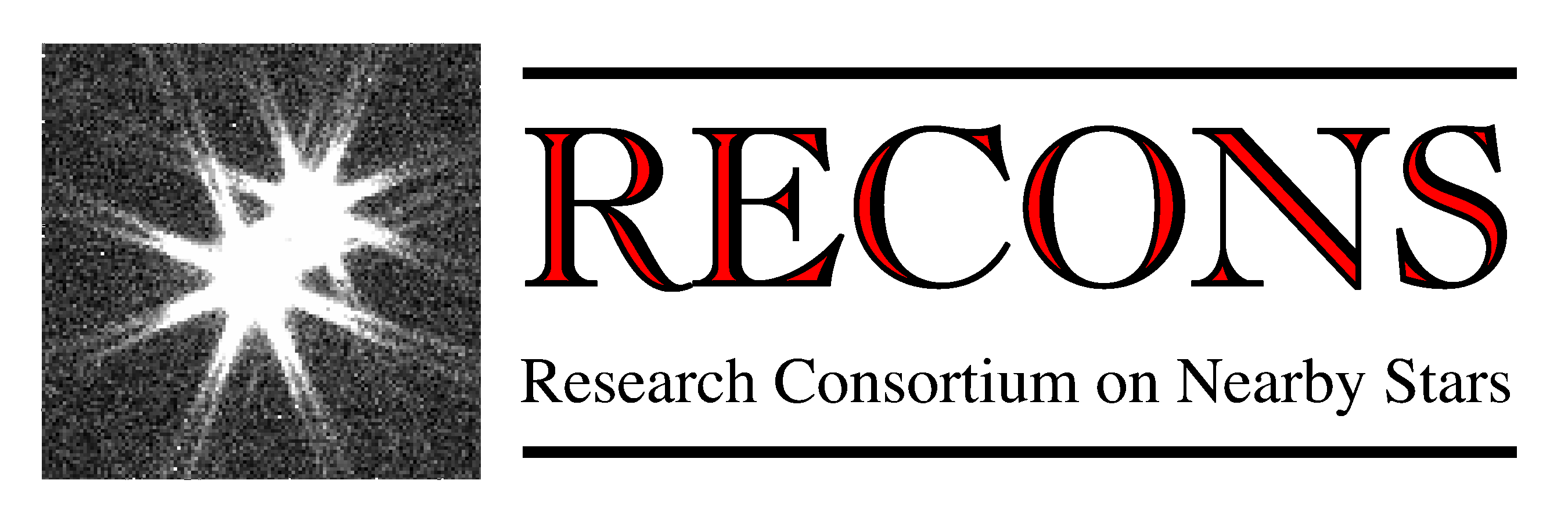
Research Projects for Students in 2024
Astrometry of M dwarf binaries
My student projects this semester involve data from the REsearch Consortium On Nearby Stars (RECONS).
RECONS studies the lowest-mass stars (M dwarfs) located in our immediate solar neighborhood through images taken at Cerro Tololo Inter-American Observatory in Chile. From those images, we measure how those stars move (astrometry) and how their brightnesses change over time (photometry/variability), and for many of them we have data spanning 10-20 years!
To be prepared for these projects, you need to already have proficiency in at least one programming language including plotting/graphing. Then, during your project, you can expect to develop these skills:
- Python proficiency, including plotting data with matplotlib and viewing FITS images
- Using DS9 and IRAF together to view and explore astronomical images
- Navigating Linux from the command line and using various command-line tools
Project #1: Fitting Multi-Decade Binary Orbits

With so many years of data, quite a few of our M dwarfs now show evidence of having stellar or brown dwarf companions orbiting them. By fitting models to these stars' motions we can determine what their orbits look like and what their masses might be, both of which are active areas of research for low-mass stars. Orbits 10-20 years long are relatively rare because they are more difficult to observe, so each long-period system we learn about adds valuable context to low-mass stars' dynamics.
With this project, you will learn to reduce the astrometric data and fit binary star orbits, then apply your new skills to the longest-orbiting systems in our data set that have never been well characterized before. You will also develop techniques to push our orbit-fitting tools beyond their typical capabilities -- are there settings we haven't yet explored? Are there smarter ways to select the data? Can you tweak the fitting code to use external information about the systems?
Project #2: Testing the Nuts and Bolts of the Data Pipeline

The RECONS astrometry pipeline was originally created as a somewhat haphazard series of scripts in 1990s-era languages, but this year we are moving it into the 2020s by rewriting it in Python!
The pipeline takes an astronomical image, measures the stars' positions, corrects them for the effects of Earth's atmosphere and the telescope's optics (and more), and finally reports their "true" positions (RA and Dec). Doing this for many images taken over the years gives us the stars' motions.
Your goal is to carefully test the new data pipeline as it takes shape and confirm that it isn't injecting any subtle errors into the results. We need to run both the new and old pipelines on the same data to make sure it's perfectly consistent -- not only the final results, but also the corrections at every stage of the process. In doing this, you will develop new ways to look at the data to diagnose potential issues.
If you accept this mission, you will become well-versed in how ground-based absolute astrometry is measured -- not only how the initial images affect the stars' final measured positions (RA and Dec), but also all the subtle in-between steps happening "under the hood" that users rarely see.
Project #3: Teaching the Pipeline to Check Our Images For Us
The goal of this project is to write a procedure to automatically select the most high-quality images to use to measure stellar positions (astrometry). The RECONS data set includes more than 1100 low-mass stars, each with dozens to hundreds of images taken over the past 20 years. The current procedure to reduce these data requires a human to view each image *by eye* to confirm the stars look good enough to take these measurements.
This process is ripe for automating! To do that, you'll first have to learn to run our data pipeline and develop your personal eye for a "good" image -- you'll need to pay attention to varying CCD features, cosmic rays and satellites, and in particular the shapes of the stars themselves (their PSFs). Stars that are warped by the atmosphere or telescope are not ideal for measuring positions.
In the second phase of the project, you'll invent your own tools to diagnose these properties automatically. Ultimately, adding that automation to the RECONS data pipeline will save us dozens of hours each year and make the results more consistent than they have ever been in the history of the program.